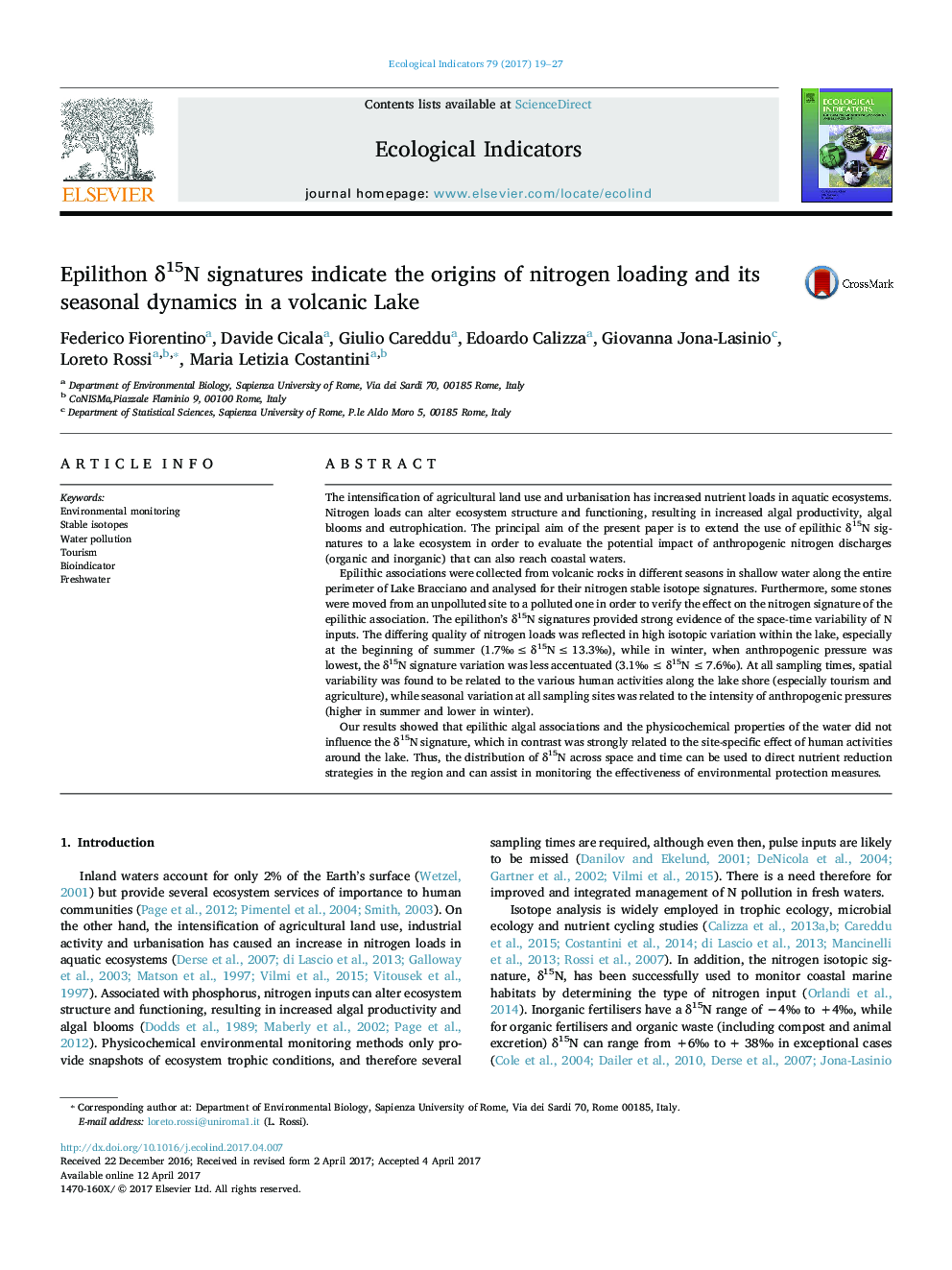| Article ID | Journal | Published Year | Pages | File Type |
|---|---|---|---|---|
| 5741748 | Ecological Indicators | 2017 | 9 Pages |
The intensification of agricultural land use and urbanisation has increased nutrient loads in aquatic ecosystems. Nitrogen loads can alter ecosystem structure and functioning, resulting in increased algal productivity, algal blooms and eutrophication. The principal aim of the present paper is to extend the use of epilithic δ15N signatures to a lake ecosystem in order to evaluate the potential impact of anthropogenic nitrogen discharges (organic and inorganic) that can also reach coastal waters.Epilithic associations were collected from volcanic rocks in different seasons in shallow water along the entire perimeter of Lake Bracciano and analysed for their nitrogen stable isotope signatures. Furthermore, some stones were moved from an unpolluted site to a polluted one in order to verify the effect on the nitrogen signature of the epilithic association. The epilithon's δ15N signatures provided strong evidence of the space-time variability of N inputs. The differing quality of nitrogen loads was reflected in high isotopic variation within the lake, especially at the beginning of summer (1.7â°Â â¤Â δ15N â¤Â 13.3â°), while in winter, when anthropogenic pressure was lowest, the δ15N signature variation was less accentuated (3.1â°Â â¤Â δ15N â¤Â 7.6â°). At all sampling times, spatial variability was found to be related to the various human activities along the lake shore (especially tourism and agriculture), while seasonal variation at all sampling sites was related to the intensity of anthropogenic pressures (higher in summer and lower in winter).Our results showed that epilithic algal associations and the physicochemical properties of the water did not influence the δ15N signature, which in contrast was strongly related to the site-specific effect of human activities around the lake. Thus, the distribution of δ15N across space and time can be used to direct nutrient reduction strategies in the region and can assist in monitoring the effectiveness of environmental protection measures.
